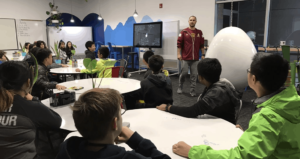Edu-Innovation, an Oxymoron?
In preparation for the New Schools Summit, following are a few thoughts for a great group.
Acknowledging the difficulty of penetrating the complex decentralized maze of US public education, a New Schools regular asked a dinner gathering of notable reformers last week if education innovation was an oxymoron.
After a few laughs and couple hopeful responses, a former urban deputy superintendent dampened enthusiasm by reminding us not to underestimate the power of resistance from elaborate political bulwarks. Barriers to edupreneurs clearly deflect talent and investment from the sector.
Charter schools emerged in the 90’s as an entry point that allowed edupreneurs to open mission-designed new schools, then to create mission-designed school networks. Kim Smith created New Schools Venture Fund (NSVF) to create an edupreneurial ecoysystem around schools, tools, and talent. NSVF supported the most important work in education over the last decade.
While charter management organizations were the most important development of the last decade, none of the early CMOs have really turned out to be very scalable (those hypothetical philanthropic exit strategies didn’t work out so well).
It goes without saying that we’re getting our butts kicked in the global edu-competition. We’re about ready to give away a national priority more valuable than energy independence. With higher demands and new opportunities, it’s critical that organizations like NSVF update their investment strategy, find new entry points, and focus on scalable instructional solutions.
Many of us thought edtech was another key entry point in the 90’s but 10 million computers got layered on top of school-as-we-know-it with little productivity gain. The growth of online learning is more promising as an opportunity to at least partially supplant not supplement core instruction. As we shift from batch-print (age cohorts slogging through textbooks) to personal digital learning, the new question we can begin to ask is “how to create and sequence a series of personalized learning experiences that prepare young people for college and careers?”
It’s time to invest in a new generation of learning networks with the potential to improve learning, staffing and facilities productivity—networks with the potential to drop enough margin to eventually become self perpetuating. Both investors and policy makers will need to create quality and pricing incentives to create a dynamic marketplace of productive educational options.
The breakthroughs on the next decade will take public leadership, philanthropic risk mitigation, and private investment. NSVF can play a pivotal role in framing these opportunities. Specific areas of focus should include
- · Charter networks that incorporate online learning to improve learning, staffing, and facilities productivity.
- · Personalized learning platforms that incorporate adaptive content, smart recommendation engines, social learning, and aligned services.
NSVF has always made a few return seeking investments; it’s time to bump up that percentage. As I argued in this AEI paper, if we are serious about scaling innovation, we’ll need to business models and private capital.
I’m optimistic about the ‘tech-as-air’ generation coming into leadership positions—young adults raised on cell phones and laptops that never worked or learned without the internet. If we provide better incentives and remove a few barriers, they will create the learning options our kids deserve.





0 Comments
Leave a Comment
Your email address will not be published. All fields are required.